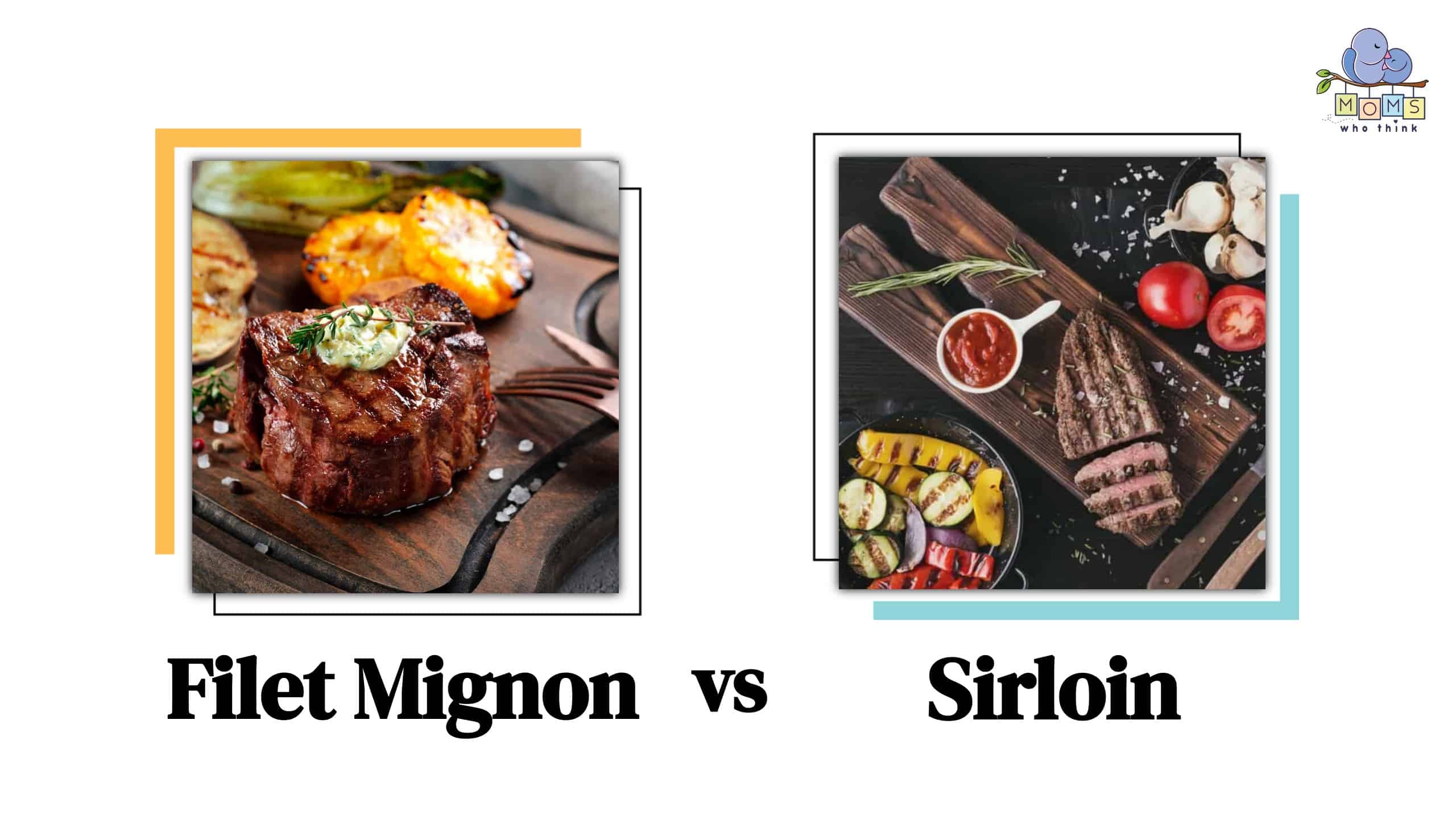What is the best steak on the market today? For steak lovers, it can be fun to try different varieties of steak and figure out which ones are the best. However, when it comes to your taste buds, it's all about personal preference. Two of the more popular steaks on the market are filet mignon and sirloin. Chances are you have heard of these two, but what are the differences? The differences lie in where they are cut from, tenderness, and flavor.
- The must-have convenient reference guide for every home cook!
- Includes more than 8,000 substitutions for ingredients, cookware, and techniques.
- Save time and money on by avoiding trips to grab that "missing" ingredient you don't really need.
What Is Filet Mignon
Filet mignon cut comes from beef tenderloin. It is cut from the very tip, which is the most tender area of the beef tenderloin. The beef tenderloin is one of the most delicate parts of the animal. It doesn't have a lot of marbling or fat, which means it is very tender. Filet mignon is often seen in luxury dinners with roasted vegetables and delectable sides. So, because of the quality of this meat, it is one of the more expensive choices.
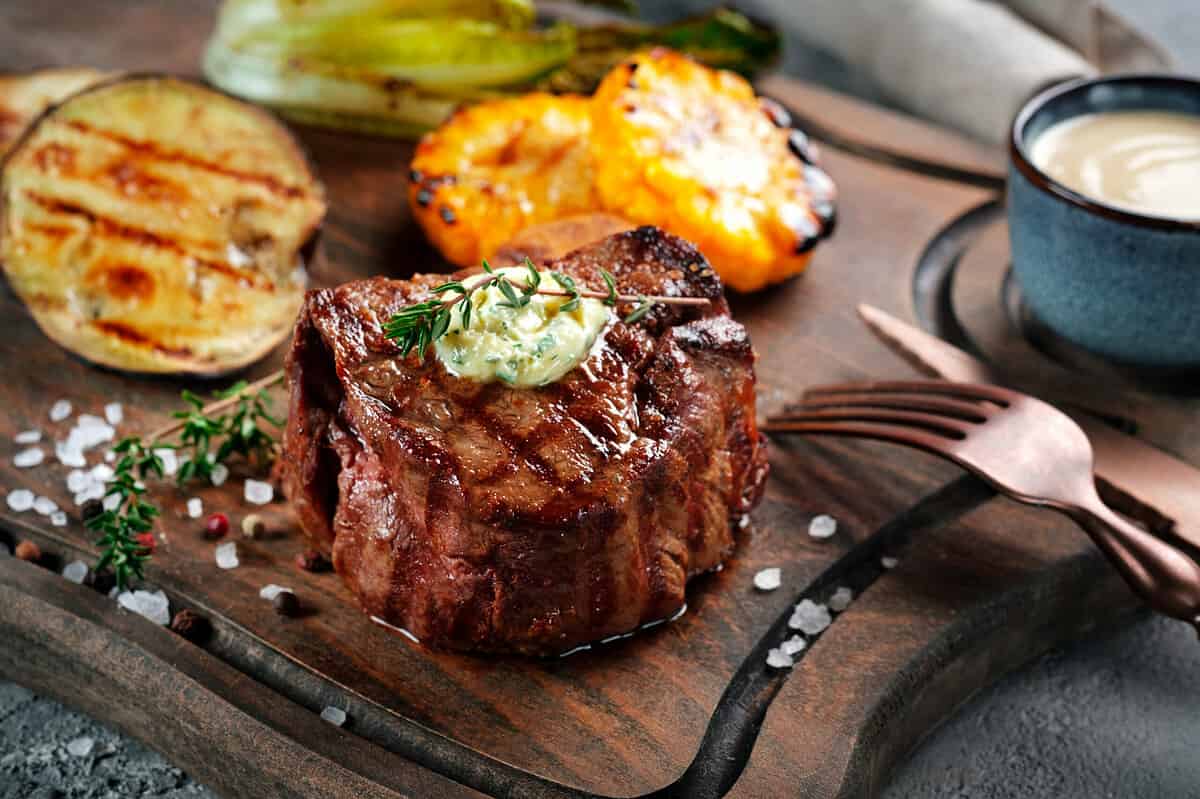
Filet mignon is a delectable dinner; many enjoy it with roasted sides like vegetables.
©Andrei Iakhniuk/Shutterstock.com
What Is Sirloin
Sirloin is very popular among steak lovers because of its versatility and affordability. It comes from the back of the animal, the section between the short loin and the round. It runs alongside the back of the cow from the thirteenth rib to the hip bone; the top sirloin is often used for steaks, and the bottom sirloin is often used as a roast.
This top sirloin is excellent for grilling and can be used in other entrées, such as fajitas, or on a salad.
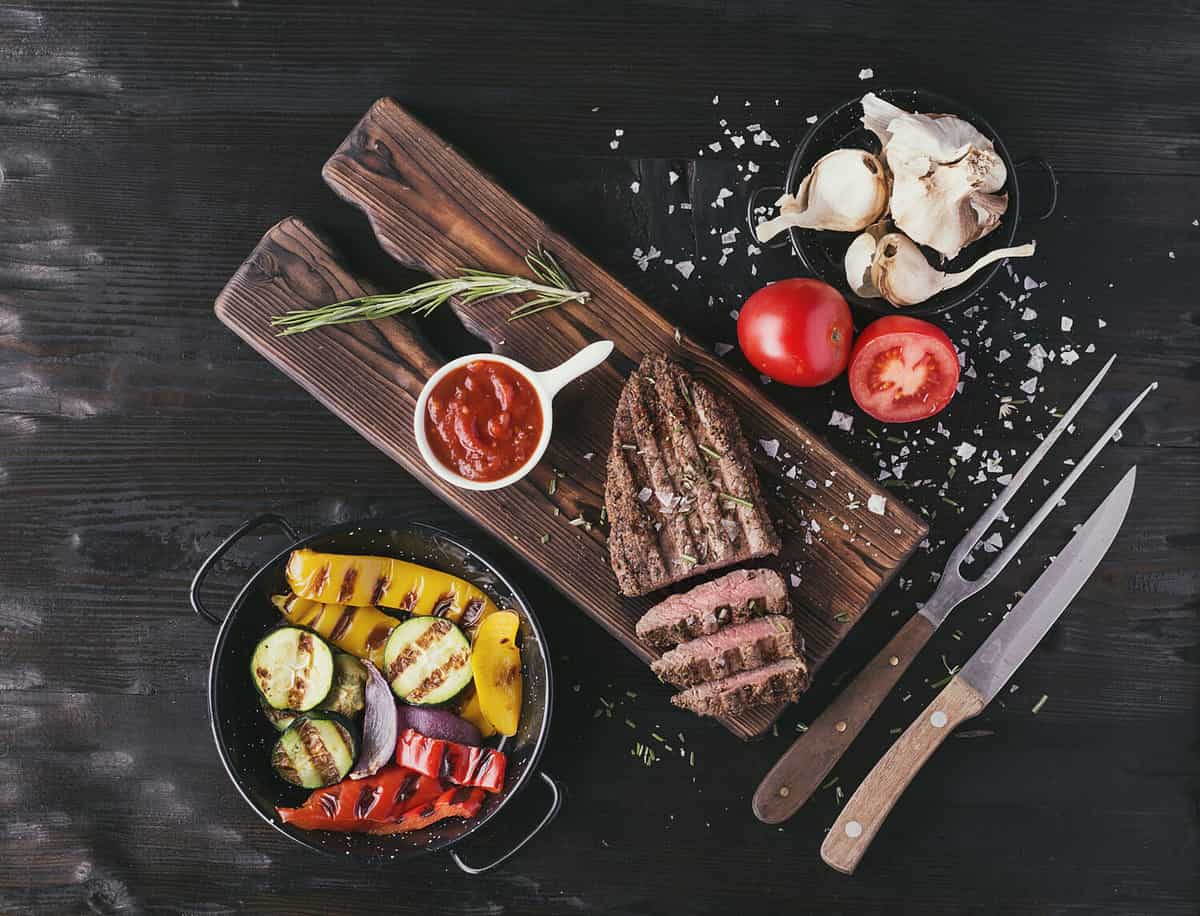
Sirloin steak is popular amongst grillers because of its hearty taste and affordability.
©Pedal to the Stock/Shutterstock.com
Sirloin vs. Filet Mignon: What Is the Difference?
Now that we know the location of these two specific cuts of meat, what exactly is the difference between the two? There are several differences, and we will get into each of the main ones: tenderness, price, and flavor.
The primary difference between filet mignon and sirloin is the section of the cow each cut of steak comes from. Filet mignon is cut from the tenderloin while sirloin is cut from a section between the loin and rump. This difference in location means filet mignon has a buttery texture, mild flavor, and is much more tender whereas sirloin has a firmer texture and more robust beef flavor.
The reason for this texture and taste difference is that tenderloin is a muscle that receives little exercise. This lack of exercise leads it to lack the firmness of other cuts. Meanwhile, sirloin is located near the rear of the cow and becomes tougher and leaner from exercise.
Because the tenderloin is only about 1% of a cow's weight and filet mignon is prize for its tenderness, it's normally one of the most expensive expensive steak cuts. Sirloin by contrast is more affordable, with top sirloin costing more than bottom sirloin.
While filet mignon is very tender to the point where it feels like it's melting in your mouth, the flavor is not as bold as sirloin but milder with a hint of beef. Filet mignon also has little to no marbling because of where it is cut from on the animal. If you're unsure what marbling is, let's look at it below.
What Is Marbling?
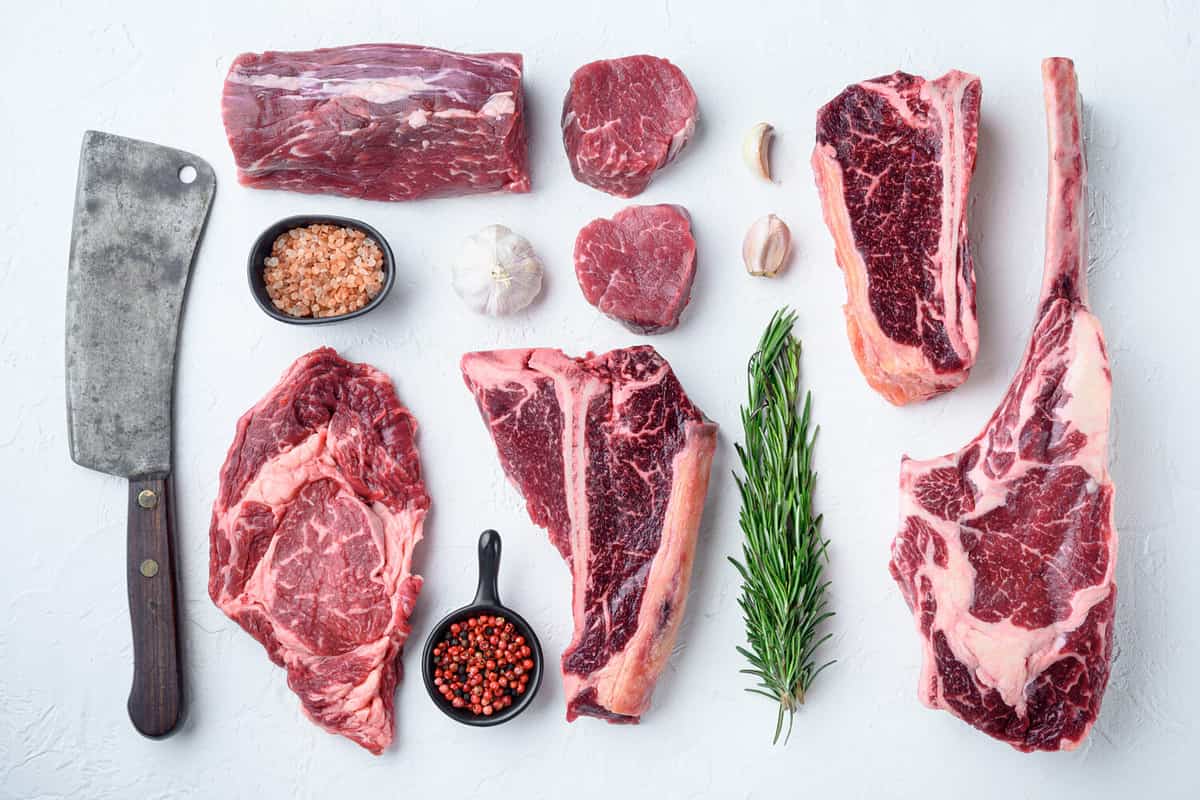
Marbling is a contributing factor when considering which cut of meat to purchase.
©Chatham172/Shutterstock.com
Marbling regarding steaks is an excellent indicator of how juicy the steak will be. The most marbled steak on the market tends to be ribeye. When a steak is highly marbled, it is an excellent indicator of how easily it will cook. This is because the marbling is the intramuscular fat dispersed throughout the meat. It produces strong flavor and oils, making it easier not to overcook the steak. A few reasons steak lovers look out for marbling is because:
- The fat dispersed throughout it is healthier.
- It can indicate the level of juice that will add to the flavor of the meat.
- Harder to overcook when there's more marbling, contributing to a more juicy and less chewy taste.
It is important to remember that marbling doesn't necessarily mean tender. Even though marbling contributes to the juiciness of a steak, there are plenty of cuts of meat out there with no marbling, such as filet mignon, that are very tender.
- The must-have convenient reference guide for every home cook!
- Includes more than 8,000 substitutions for ingredients, cookware, and techniques.
- Save time and money on by avoiding trips to grab that "missing" ingredient you don't really need.
Filet Mignon vs Sirloin Nutritional Comparison: Fat, Proteins, Cholesterol
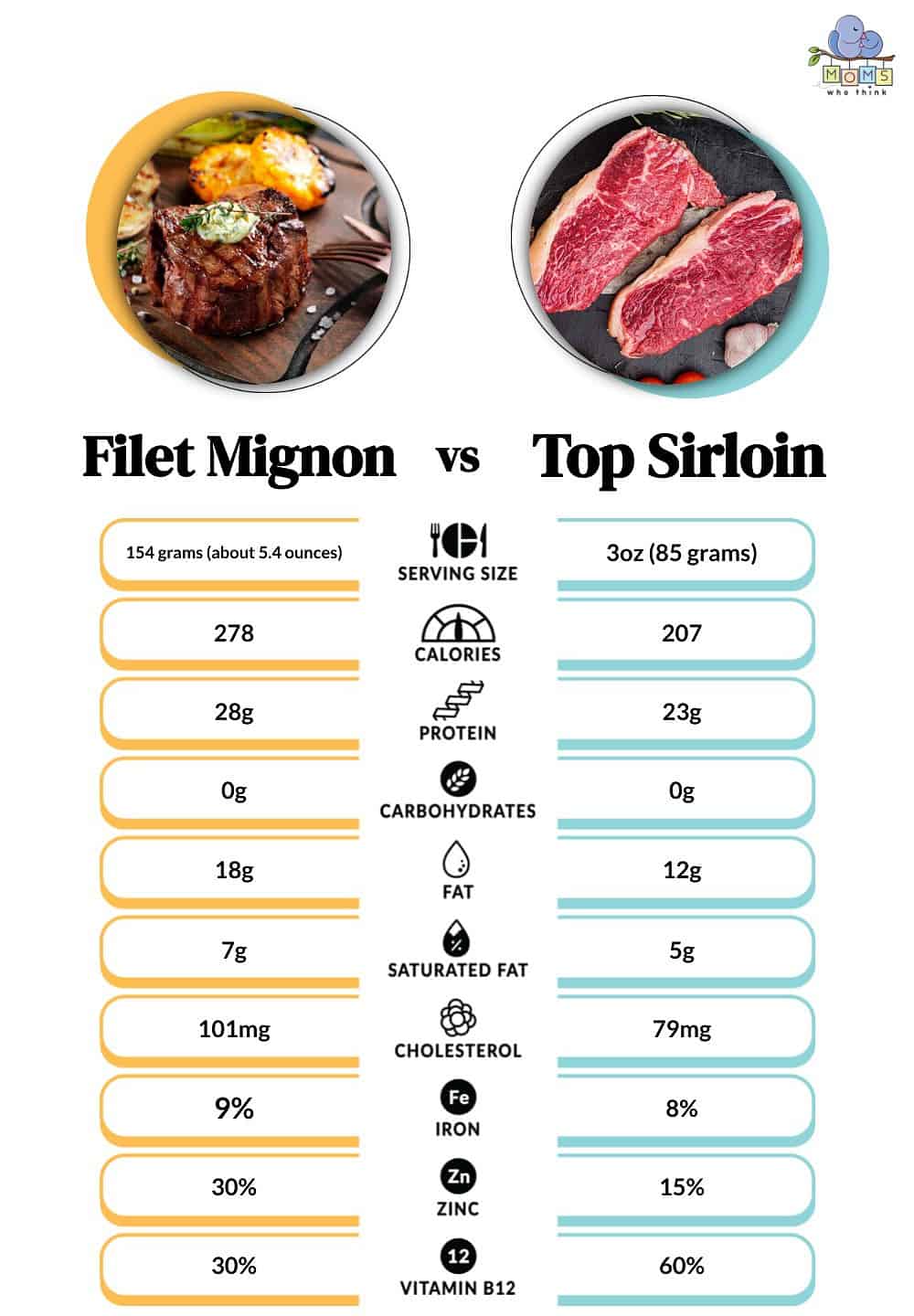
Nutritional comparison of filet mignon and top sirloin with data from the USDA
©
In general, sirloin is leaner than filet mignon. However, keep in mind that top sirloin should have higher fat content than bottom sirloin. Both cuts of steak have no carbohydrates and large amounts of protein and fat in addition to vitamins and minerals that can be uncommon in other foods (such as high amounts of B vitamins).
Cooking Methods for Sirloin
When cooking a sirloin, you should set it out for at least 30 minutes to reach room temperature. Then you will want to season it with your desired seasonings and pat it with oil. It is important to remember that sirloin already has a bold, beefy flavor. Therefore, it only requires a little seasoning. Many enjoy pan-searing, grilling, or even barbecuing these steaks.
Cooking Methods For Filet Mignon
Filet mignon also requires little preparation. First, season it with your desired seasoning and heat an oiled skillet to medium heat. You will want to cook each side for two minutes, then flip and cook for two more minutes. Continue to do this until you reach your desired doneness.
For those of you who want your steak to be medium rare, the internal temperature should be 135°. Medium doneness is 145°. The medium well is 155°. And well done should reach 165°. Again the doneness of your steak is all about personal preference. The less done your steak is, the more tender and juicy it will taste.
Which One Is More Tender?
The clear winner of the tenderness battle is filet mignon. Filet mignon gives your taste buds a flavor that feels like a party in your mouth. This cut of meat is not chewy but more buttery and mouthwatering. Although sirloin has a more rigid texture, it can still have a moderate tenderness if cooked correctly, and it has that bold flavor that many steak lovers enjoy.
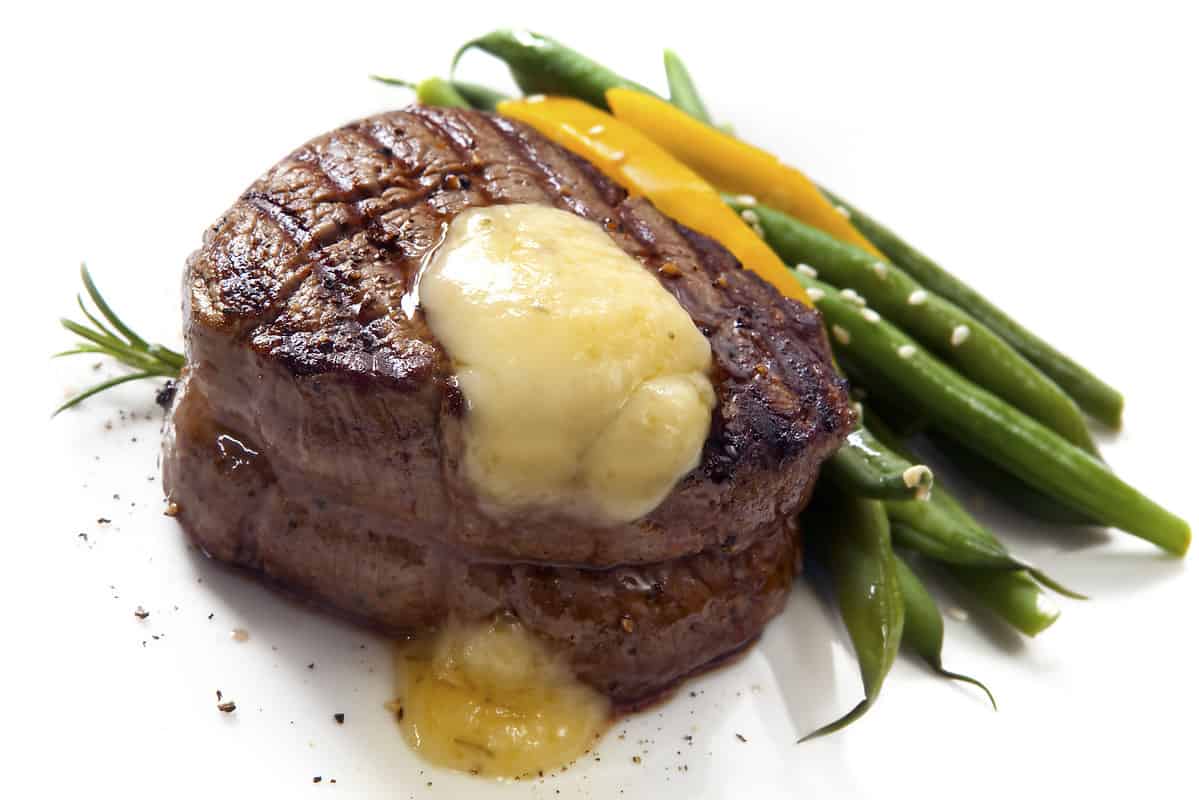
Filet mignon is the clear winner of the tenderness battle. However, sirloin can still produce a tender cut when cooked with care.
©iStock.com/robynmac
Appearance and Characteristic Differences
There are a few key appearance and characteristic differences between these two cuts of meat. First, sirloin has more marbling than filet mignon. Although it's not as much as ribeye, the juiciest and most marbled steak on the market, some marbling characteristics in sirloin still exist. Filet mignon, on the other hand, is more tender and has a mild melting-in-your-mouth flavor. Filet mignon also tends to be smaller than sirloin. Sirloin is typically served between six and eight ounces, while filet mignon is just around two inches in size. In addition, sirloin tends to be firmer than filet mignon, contributing to the tenderness. Finally, sirloin steak is more versatile. Many people enjoy eating sirloin with salads and fajitas, as a main dish., and even appetizers.
One Final Note
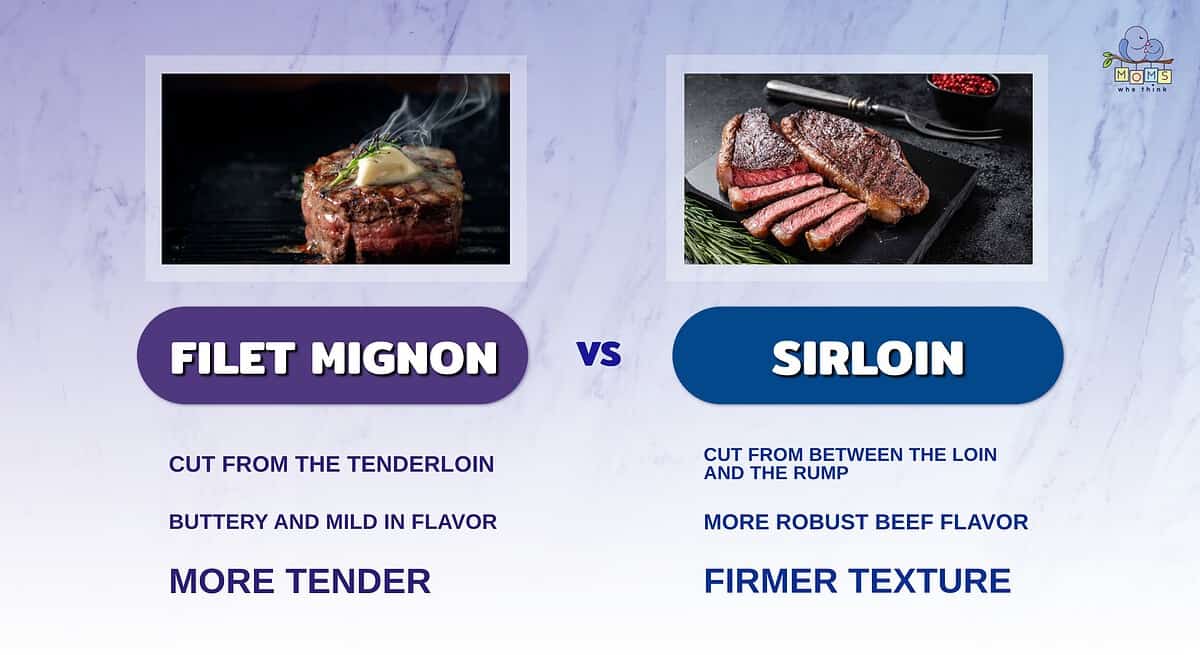
- Filet mignon and sirloin are cut from two distinct parts of the cow. Filet mignon comes from the tenderloin, while sirloin comes from between the rump and the loin.
- Filet mignon's buttery and mild taste is highly esteemed among steak enthusiasts. Don't sell sirloin's beefy and robust flavor short, though.
- Expectedly, filet mignon is a more tender cut of beef. Sirloin has a firmer texture, but when cooked right it can still be tender.
Now, are you asking yourself which cut of steak you should try out this weekend? It all comes down to personal preference, but there are a few key factors that you can consider before choosing the perfect steak. First, you will want to look at what type of taste you are looking for. Are you looking for a mild or buttery taste? Going with a filet mignon would be perfect. Do you want a bolder flavor that packs more of a punch? Then a sirloin is a great option.
Aside from taste, consider the price of these two steaks. Many people love sirloin because it tends to be less expensive than other options. A top sirloin steak averages around $11 per pound, depending on where you buy it. If you purchase it at a grocery store, filet mignon costs around $30-$40 per pound. But, of course, the price will be even higher for a butcher or steakhouse.
Whatever you decide, these two meat cuts are delicious and memorable. Even though they provide different flavors and textures, both steaks are high-quality, and you can't go wrong with either one.
Steak Recipes
- Flank Steak Vs. Round Steak
- Prime Rib Vs. Steak: What's the Difference?
- Hanger vs. Skirt Steak
- Tomahawk Steak vs. Ribeye
- Chicken Fried Steak vs. Country Fried Steak
Steak Recipes
Print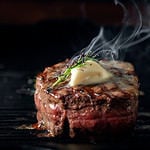
Bacon-wrapped Steak
Ingredients
12 large garlic cloves, peeled
1/4 cup olive oil
3 Tablespoons unsalted butter, cut into small chunks
Kosher salt
3 1/2 teaspoons chopped chives
1/2 teaspoon coarsely ground black pepper
1/2 teaspoon dried thyme leaves
4 (6- to 7-ounce) filet mignons, about 1 inch thick
4 very thin slices of lean bacon
6-inch wooden skewers or toothpicks, soaked in water 10 minutes and patted dry
Instructions
1. Preheat oven to 400 degrees F. Place peeled garlic and olive oil in 1-cup, ovenproof ramekin, soufflé dish or custard cup. Cover dish tightly with aluminum foil and place in oven.
2. Roast on center rack until garlic is golden and very tender and soft when pierced with knife, about 30 minutes (start checking cloves after 20 minutes and then every 5 minutes until done).
3. With slotted spoon, remove garlic from bowl and reserve oil. Place garlic, 1 1/2 teaspoons of the reserved oil, butter and 1/8 teaspoon salt in food processor or blender and process, pulsing machine on and off for 30 seconds or less until garlic is coarsely chopped and blended with butter and oil.
4. Transfer garlic butter to small bowl and stir in 2 teaspoons of the chives. The garlic butter can be prepared 1 day ahead. Cover with plastic wrap and refrigerate. Bring to room temperature 30 minutes before ready to use.
5. When ready to cook steaks, oil a grill rack and prepare grill. In small bowl, stir together 1 teaspoon kosher salt, coarsely ground black pepper, and thyme. Rub both sides of each filet with some of this seasoning.
6. Wrap each steak around its sides with 1 slice of bacon. Skewer bacon in place with wooden skewer or with 2 to 3 toothpicks.
7. Grill steaks until lightly charred on the outside and until bacon is cooked, about 5 minutes per side for medium-rare. When done, remove steaks from fire and place on warm serving plate. Remove toothpicks.
8. Top each steak with 1 generous pat of roasted garlic butter and sprinkle with some of remaining chives. When the butter starts to melt, season the steaks. Serve immediately.
- Steak with Mashed ‘Potatoes' Recipe
- Oriental Steak Stir-Fry Recipe
- Easy Swiss Steak Recipe
- Steak and Potato Stir-Fry Recipe
